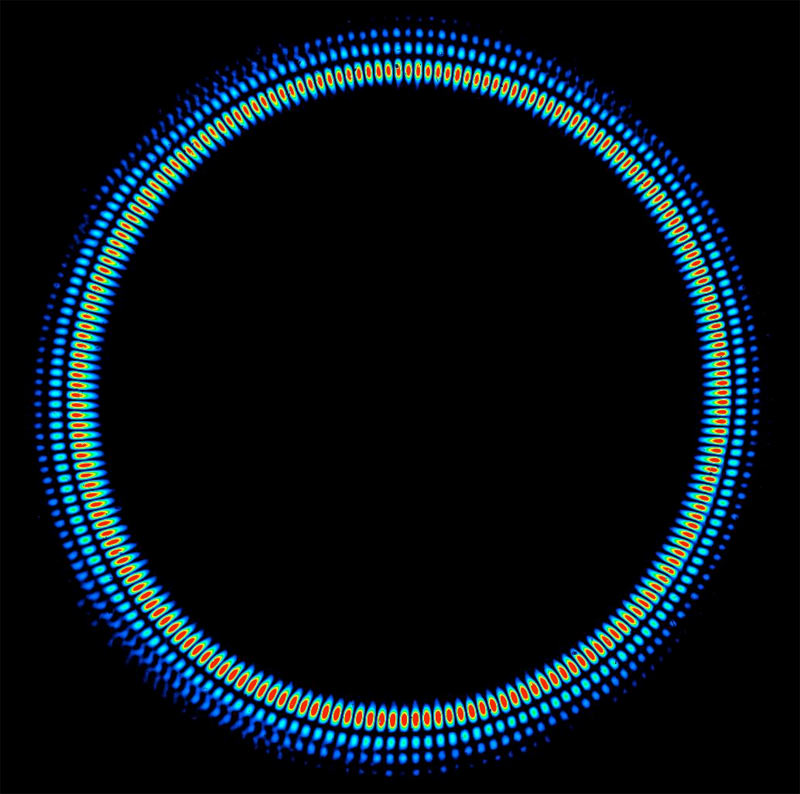Quantum Meets Macro: Strange Particle Behavior Found

Scientists shined a little light, literally, on the perplexing processes that govern atoms, in a new experiment that showed the effect of bouncing one photon of light off an atom.
Atoms and particles obey a set of rules called quantum mechanics that are quite different from the rules of ordinary objects.
"The main difference between quantum mechanical behavior and classical behavior is that quantum systems can exist in several states, several realities at the same time," explained Roee Ozeri, a physicist at the Weizmann Institute of Science in Israel. "They can be in several positions at the same time, or can point in several directions at the same time."
For everyday objects in the macroscopic world, though, this ability to be in two places at once, called superposition, is lost, and classical physics takes over. When a quantum system transitions into the classical world, it's called decoherence. [Stunning Photos of the Very Small]
"Decoherence is the process by which this phenomenon, being in multiple states at the same time, washes away and the system converges into a single physical reality," Ozeri said.
To better understand how decoherence works, Ozeri and his colleagues, led by the Weizmann Institute of Science's Yinnon Glickman, shined single particles of light, called photons, from a laser at atoms. After the photons hit the atoms, they bounced off (a process called scattering) and were collected by a detector. That allowed the researchers to measure the effect of the light on each atom's spin.
Superposition is usually destroyed (called decoherence) when a quantum system is measured, since the act of measuring places the system into one state or the other. But the researchers found that in their experiment, the outcome depended on whether the atom's spin was aligned with the direction of the laser light.
Get the world’s most fascinating discoveries delivered straight to your inbox.
If the atom's spin was initially aligned in a different direction than the orientation of the light, then the atom would become entangled with the particle of light, called a photon. When two particles are entangled, they retain a connection even when separated, so that an action performed on one particle would affect the other.
Entanglement opens the door to decoherence, because a change in the environment of either particle will upset the other. In the case of the experiment, decoherence set in when the photon, now entangled with the atom, was absorbed by the light detector.
However, the experiment also showed that if the atom's spin was initially aligned in the same direction as the laser light, then the photon and atom did not become entangled, and thus, decoherence was avoided.
"In this study, Glickman et al. show that the quantum superposition is preserved if the photon is detected in a well-defined direction and synchronized with the phase of the quantum superposition," said physicist Peter Maunz of Sandia National Laboratory, who was not involved in the project.
The finding could help physicists harness the power of quantum mechanics for technologies such as better clocks or quantum computers, which would have significantly boosted power and speed compared withregular computers. In order to realize these technologies, scientists must be able to manipulate, and measure, quantum systems, while preserving their quantum nature without causing decoherence.
"All these technologies really rely on the quantum behavior of these systems," Ozeri told LiveScience. "For this purpose, you really have to fight decoherence. You have to understand the mechanism that makes it happen to engineer the remedy."
The new study may just be a step in that direction.
"This is a very neat experiment, deepening the insight into the light-scattering process," Maunz said. "It is exciting to see that the spontaneous emission of a photon does not necessarily destroy the quantum superposition. The insight into the quantum measurement process and decoherence of quantum systems obtained from this experiment deepens the understanding of the underlying physical phenomena and will lay the groundwork to improve the use of photons scattered from single atoms for applications in quantum information processing."
Follow Clara Moskowitz @ClaraMoskowitz and Google+. Follow LiveScience on Twitter @livescience, Facebook or Google+. Original article on LiveScience.com.

